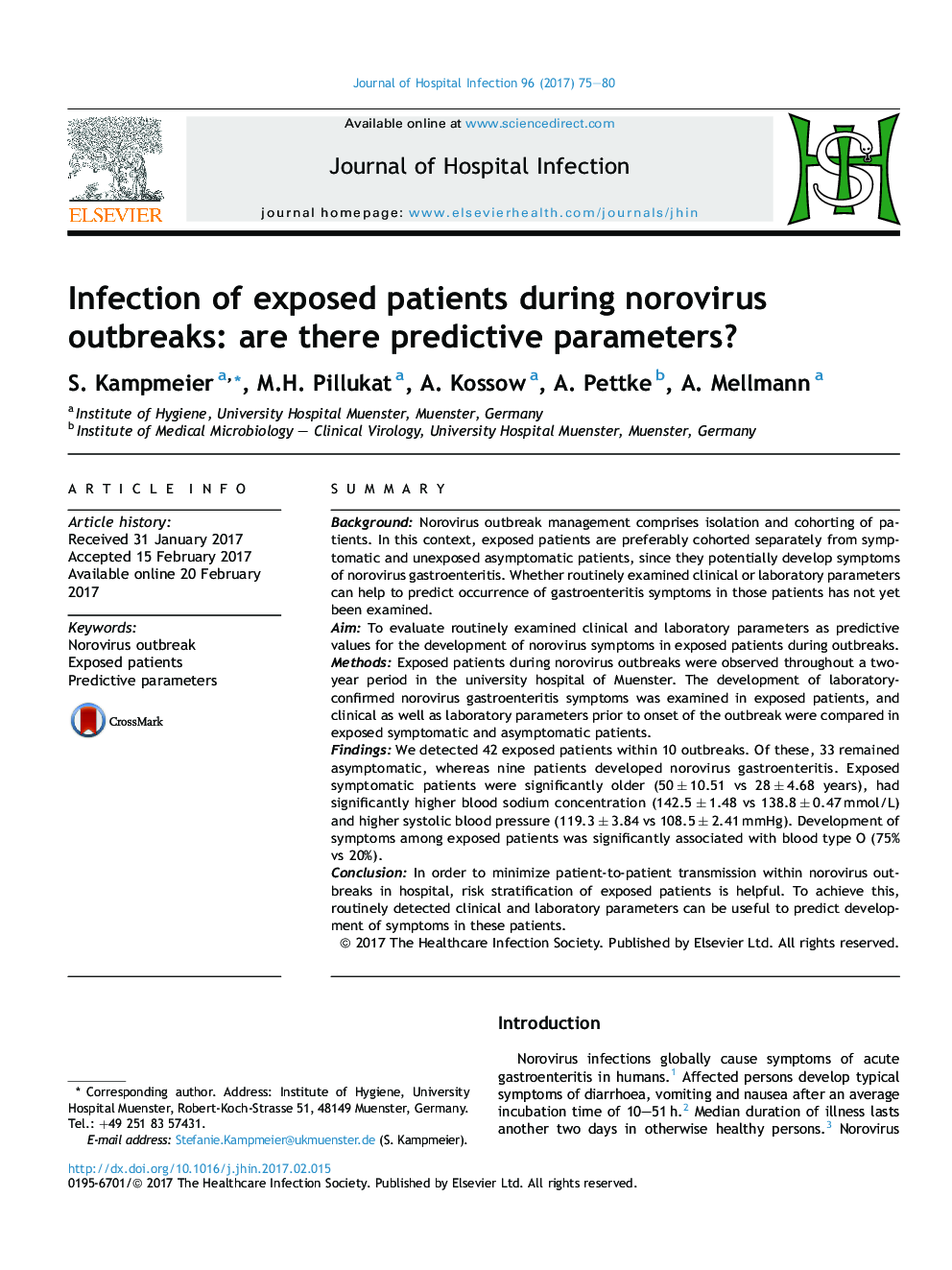| Article ID | Journal | Published Year | Pages | File Type |
|---|---|---|---|---|
| 5668349 | Journal of Hospital Infection | 2017 | 6 Pages |
SummaryBackgroundNorovirus outbreak management comprises isolation and cohorting of patients. In this context, exposed patients are preferably cohorted separately from symptomatic and unexposed asymptomatic patients, since they potentially develop symptoms of norovirus gastroenteritis. Whether routinely examined clinical or laboratory parameters can help to predict occurrence of gastroenteritis symptoms in those patients has not yet been examined.AimTo evaluate routinely examined clinical and laboratory parameters as predictive values for the development of norovirus symptoms in exposed patients during outbreaks.MethodsExposed patients during norovirus outbreaks were observed throughout a two-year period in the university hospital of Muenster. The development of laboratory-confirmed norovirus gastroenteritis symptoms was examined in exposed patients, and clinical as well as laboratory parameters prior to onset of the outbreak were compared in exposed symptomatic and asymptomatic patients.FindingsWe detected 42 exposed patients within 10 outbreaks. Of these, 33 remained asymptomatic, whereas nine patients developed norovirus gastroenteritis. Exposed symptomatic patients were significantly older (50 ± 10.51 vs 28 ± 4.68 years), had significantly higher blood sodium concentration (142.5 ± 1.48 vs 138.8 ± 0.47 mmol/L) and higher systolic blood pressure (119.3 ± 3.84 vs 108.5 ± 2.41 mmHg). Development of symptoms among exposed patients was significantly associated with blood type O (75% vs 20%).ConclusionIn order to minimize patient-to-patient transmission within norovirus outbreaks in hospital, risk stratification of exposed patients is helpful. To achieve this, routinely detected clinical and laboratory parameters can be useful to predict development of symptoms in these patients.
